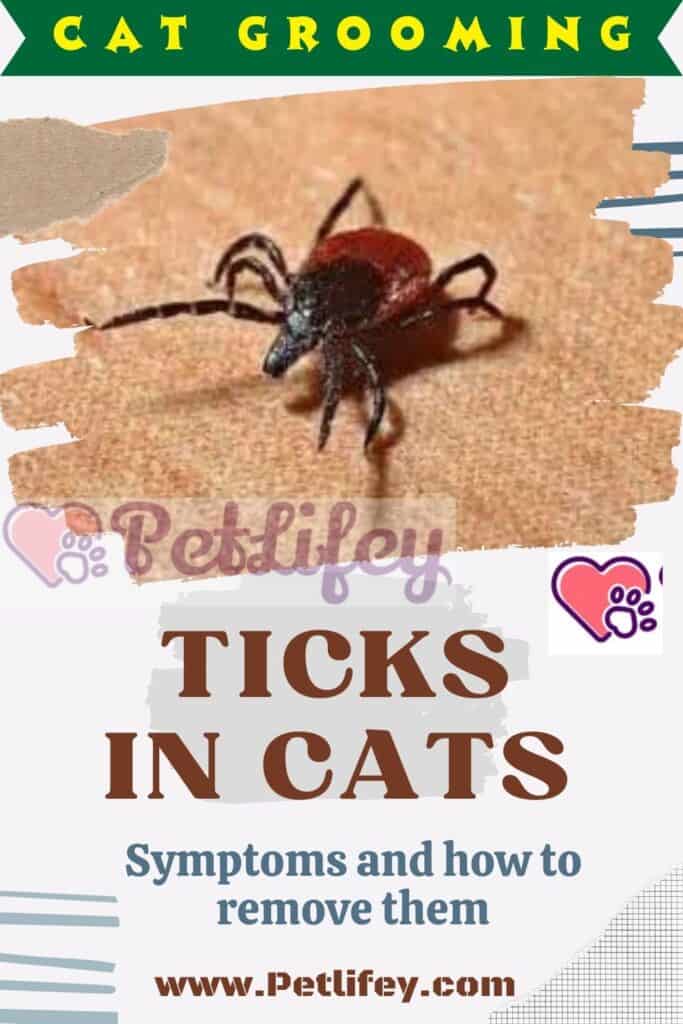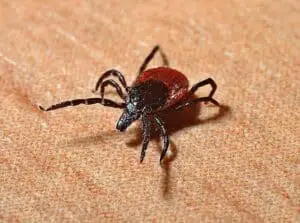
Ticks – one of the most dangerous enemies for our cats. Ticks can cause very serious damage: if they are not subjected to strict control, cats can be attacked and thus run into dangerous diseases such as Lyme borreliosis, viral encephalitis and fever.
Symptoms of ticks in cats
To avoid delay in identifying the problem it is important to learn to recognize the symptoms of ticks in cats early: fever, lameness, loss of appetite, cough, sudden pain in a limb or elsewhere, arthritis or joint swelling, lethargy or depression. At the sight of one of these symptoms, we are in the “smell of ticks”: contact the veterinarian immediately, at least for a visit and a blood test.
Where can cats get ticks
Ticks can be found in any green area: in bushes, in woods or in grassy fields. There, hidden, having found the animal or even human target, the ticks bite cats, dogs and men almost without leaving a mark that can in fact go unnoticed for a long time. If we suspect, finding one of the symptoms indicated above, that our cat may have been bitten by a tick, we must undertake a slow and careful search of the hair. A magnifying glass can definitely be useful because ticks aren’t always visible to the naked eye.
The first places to look for ticks on cats are the ears and surroundings, neck and surrounding areas. To remove them we will have to equip ourselves with tweezers, alcohol and cotton.
To reduce the chances of finding ourselves fighting with ticks on our cat’s fur, we can begin to act on the house and, above all, on the garden, since these parasites love gardens. In the rooms the vacuum cleaner must be passed “mercilessly” on the carpets and floors, but also on cushions, sofas and various fabrics, rugs, above and below.
On the latter would also use borax, a detergent powder not difficult to find but which is difficult to escape for ticks. It dehydrates and kills them slowly: just sprinkle the carpet after having vacuumed it a little earlier, letting it act for an hour. Then, go over the vacuum cleaner.
For the various fabrics that the house can present, depending on the interior designer’s imagination, and which ticks so much like, the treatment must be rigorous. If possible they should be washed in boiling water: it kills the eggs and keeps ticks away. Rags, pillow cases and covers, bedspreads and sofa covers… every week, until there is no more shade of ticks, on your cat’s fur and elsewhere.
After cleaning the favorite areas of ticks, you can still flush them out of the most diabolical hiding places with non-toxic traps. Just place soap and water in a bowl near a light and the kennel: any ticks are attracted to them due to the warm glow of the light bulb, they can then directly collect the corpses, with merciless satisfaction.
An alternative is to attract ticks with smell – that’s what glue traps do. But the best thing is to completely avoid these parasites entering the house, which means taking care of the garden properly so as to ensure that it is “tick free”.
So let’s make it immediately a “no stray animals zone”, this garden of ours, closing the holes in the fence and arranging barriers, eliminating garbage and gluttony that could attract them. It is also useful to eliminate excrement from the lawn and use cedar. It smells unbearable for ticks – even just pellets around the garden are very off-putting. If, on the other hand, you want to do things right, some cedar barbecue bars, elegant, effective and secretly anti-tick.
If hygienically it is good to water, even better is that the yard is dry and clean. Any piles of wood must be dry and clean. The grass must be cut regularly: in short, cat ticks are ideally the ticks of the whole family that has a good job to do to avoid them.
If the garden is still to be designed or reorganized, let’s insert ad hoc plants, recommended by the nurseryman, interspersed with areas of gravel or wood shavings.
Ticks are known to hate water, much more than cats. They, at least my two, make a lot of show, but then… and it’s for a good cause. They will hate you, initially, but ticks are the worst of evils. To meet our 4-legged little lovers of compromise, you can use a non-perfumed and non-irritating soap, starting from the most critical areas such as neck and ears. An even more appreciated alternative, by felines, not by cat ticks.
The grand finale, like it or not, is a nice and vigorous brush, and let’s bow it with a nice collar.
If the cat is wandering and libertine, it will pay for its independence with regular checks on return. Yes, because it is especially after sunset that our cat risks finding the hated ticks.
How a mint is made
In the photo below you can see a mint… a picture is worth 1000 words to understand how it looks!
How to remove a tick from your cat

If you spot a tick, you will need to wear gloves and tweezers to remove it with “do it yourself” methods. After a swipe of alcohol you will have to firmly grab the mint with tweezers and “detach it with a firm movement”. I recommend, without crushing it! Once free from the tick, the cat should be kept under observation, and in the doubt of not having removed all of them you can always go to the vet for a check-up.
To prepare a “potion” at home that makes the ticks of cats disappear, protected by a mask, in advance, mix 225 grams of diatomaceous earth with 2 tablespoons of essential oils respectively of eucalyptus, lemongrass and lavender.
The first – fossil residue of algae from the diatom family – literally kills ticks by cutting off their protective coating: it penetrates them and causes them to dehydrate. The contribution of the oils is instead of a repellent type, to check for any allergies of our cat to one of the three aromas.
Once the mixture has been prepared, it should be covered with a cotton cloth until it becomes dry, at which point the salt shaker is its destination: “season” the cat’s hair as desired. It can also be distributed for the home, on carpets, above all, and on fabrics that we have seen to be the most popular with ticks. No ingredients are toxic to humans or other pets, so be careful, but you can sprinkle them with powder.






